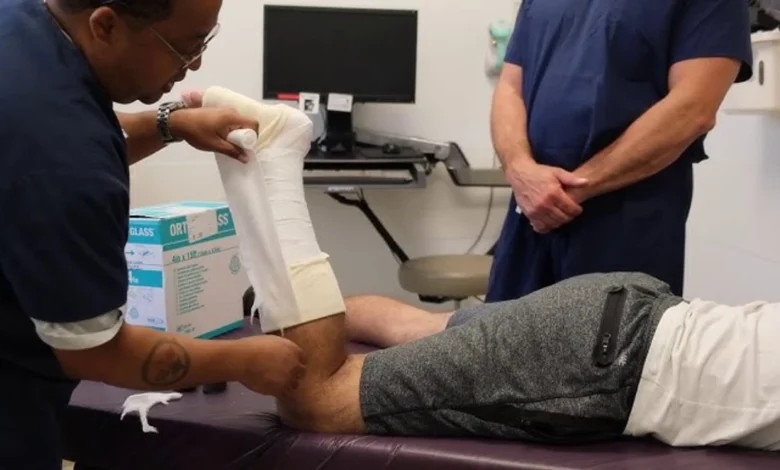Mastering the Technique of Spling: Step-by-Step Instructions

Have you ever heard of Spring? If not, you’re in for a treat. This dynamic fitness technique is making waves in the wellness community, and it’s time to dive into its world. Whether you’re looking to enhance your workouts or explore a new way to challenge your body, mastering Spling could be just what you need.
Imagine combining strength, balance, and agility all in one practice. Sounds intriguing, right? That’s the beauty of Spring! As we embark on this journey together, you’ll uncover its history, understand its benefits, and learn how to master the technique step by step. So grab your workout gear and get ready to elevate your fitness routine with something truly unique!
What is Spling?
Spring is a dynamic and engaging fitness technique that blends strength training, balance, and fluid movement elements. It challenges your body in new ways by incorporating various postures and motions designed to enhance overall physical performance.
At its core, Spling focuses on rhythmic movements that require coordination and control. This makes it an effective workout and a fun way to connect with your body.
The beauty of Spling lies in its versatility. Whether you’re a seasoned athlete or just starting on your fitness journey, this technique can be adapted to suit any skill level.
As you explore the world of Spring, you’ll discover how it encourages mindfulness through movement while promoting improved flexibility and core stability. It’s more than exercise; it’s an experience that invites you to move freely and joyfully.
History and Origins of Spling
Spring has roots in ancient cultures, where the physical movement was closely tied to daily life and survival. Early practitioners discovered the importance of body mechanics while hunting or gathering.
As time progressed, Spling evolved into a more structured form. It began integrating elements from various disciplines, such as martial arts, dance, and yoga. These influences enriched its technique and broadened its appeal.
In the 20th century, fitness enthusiasts embraced Spling to enhance strength and flexibility. The rise of wellness culture highlighted its benefits for mental focus and physical conditioning.
Today, Spling is recognized as an exercise and a holistic approach to well-being. Its historical journey reflects the ever-evolving nature of human movement and our quest for balance in our lives.
Benefits of Spling
Spring offers a variety of benefits that cater to physical and mental well-being. It enhances strength and flexibility, allowing for more dynamic movement patterns. As you master Spling, you’ll notice improvements in your overall athletic performance.
This technique also promotes better posture by encouraging proper alignment during exercises. Engaging the core is crucial in Spling, increasing stability in everyday activities.
Additionally, Spring can be a great stress reliever. The focus required during practice helps clear the mind while boosting mood through endorphin release.
Incorporating Spling into your routine means adding an exciting challenge that keeps workouts fresh and engaging. You’ll build endurance over time as you refine your skills with each session.
Step-by-Step Guide to Mastering the Technique

To master the Spling sling technique, start with proper positioning and alignment. Your feet should be shoulder-width apart, ensuring a solid base. Keep your knees slightly bent to promote fluid movement.
Next, focus on breathing techniques. Inhale deeply before executing each move, holding that breath for stability. This not only enhances control but also prepares you mentally.
Core engagement is crucial in Spling. Activate your abdominal muscles while maintaining a straight posture throughout the practice. This will provide you with the strength necessary for precise movements.
Incorporate various practice drills into your routine. Simple exercises like slow-motion attempts can help refine form and build muscle memory over time, allowing you to work towards mastery effectively and safely.
- Proper Positioning and Alignment
Getting the positioning right is crucial for effective spling. Start by standing with your feet shoulder-width apart. This foundation provides stability and balance.
Your hips should be aligned directly over your ankles, and your knees should be slightly bent. Avoid locking your hips, as this can hinder movement.
Next, focus on your spine. Keep it neutral; an arched or overly rounded back can lead to injury and inefficient performance.
Shoulders also need attention—relax them and keep them away from your ears to maintain tension-free alignment. Arms should hang naturally at your sides or be positioned according to the specific needs of the exercise you’re performing.
Always check in to see how you’re feeling during spring practice. Adjustments may be necessary until you find that sweet spot where comfort meets effectiveness. Proper alignment sets the stage for mastery and enhances overall technique progression.
- Breathing Techniques
Breathing techniques are crucial to mastering the art of splicing. Proper breath control enhances performance and helps maintain focus throughout the routine.
Start by practising diaphragmatic breathing. This technique involves inhaling deeply through your nose, allowing your abdomen to expand rather than just filling your chest. Exhale slowly through pursed lips, releasing all tension.
While performing spling exercises, synchronize your breath with movement. Inhale as you prepare for an action and exhale during exertion. This rhythmic pattern fuels energy while providing stability.
Incorporate box breathing into your practice sessions. Inhale for four counts, hold for four counts, exhale for four counts, and pause for four seconds before repeating. This method calms nerves and sharpens concentration.
By refining these breathing techniques, you can enhance endurance and elevate the overall quality of your spling experience.
- Core Engagement and Control
Core engagement is essential for mastering the splicing technique. A strong core stabilizes the body, allowing for fluid movement and control during each phase of the exercise.
Start by drawing your belly button toward your spine to engage your core effectively. This simple action activates the muscles that support your torso. Focus on maintaining this contraction throughout every repetition.
Control is equally important as it ensures precision in movements. Avoid hurried or jerky motions; instead, emphasize smooth transitions between positions. This helps build strength while reducing the risk of injury.
Incorporate various exercises targeting different areas of your core to enhance overall stability and strength. Planks, bridges, and rotational movements can improve spelling performance over time.
Remember that consistency is critical when developing core strength and control. Regular practice will lead to noticeable improvements in both form and effectiveness.
- Practice Drills for Improvement
Regular practice is crucial for enhancing your sling technique. Start with basic drills that focus on form and movement.
One effective drill involves shadow springing. Perform the motion without any equipment, concentrating on posture and fluidity. This helps build muscle memory.
Next, resistance bands are incorporated to add tension during the movements. Anchor the band securely and perform slow, controlled saplings while maintaining proper alignment.
Another great exercise is partner work. Find a friend who can provide feedback or hold you accountable for your stance and execution.
Remember to underestimate the power of video analysis; recording yourself can reveal insights into areas that need improvement.
Integrate timed intervals where you perform as many correct saplings as possible within a set time frame. This will develop endurance alongside skill mastery. Regular repetition of these drills cultivates confidence and precision in your Spling abilities.
Advanced Spelling Variations
Advanced Spling variations can elevate your practice to new heights. Once you’ve mastered the basics, experimenting with these variations will challenge your skills and enhance overall fitness.
One popular variation is the One-Legged Spling. Balancing on one leg engages stabilizing muscles, improving coordination and strength. It requires focus as you shift weight, adding a dynamic element to your routine.
Another exciting option is the Weighted sampling. Incorporating resistance helps build muscle endurance while refining technique. Start with light weights to maintain form before progressing.
The Plyometric Spling introduces explosive movement into your training. This variation increases power and agility by incorporating jumps or quick transitions between each repetition.
Each advanced version boosts physical capabilities and keeps workouts fresh and engaging. Try mixing them into your sessions for a fun challenge!
Tips for Incorporating Spling into Your Fitness Routine
Incorporating Spring into your fitness routine can elevate your workouts. Start small and gradually increase the intensity to avoid burnout.
Try dedicating a specific day of the week solely to spelling exercises. This will create structure in your regimen while allowing you to focus on mastering the technique.
Mix Spring with other workouts for variety. Pair it with strength training or cardio sessions to keep things fresh and exciting.
Set measurable goals related to spelling, such as perfecting alignment or increasing repetitions over time. Tracking progress keeps motivation high.
Consider joining a group class or finding an online community focused on splicing techniques. Sharing experiences can enhance learning and make exercising more enjoyable.
Always listen to your body during practice sessions, ensuring you’re not straining yourself too much, which could lead to injuries.
Common Mistakes and How to Avoid Them
One of the most common mistakes in Spling is improper positioning. When your body isn’t aligned correctly, it can lead to tension and even injury. Always check that your feet are shoulder-width apart and that you maintain a neutral spine.
Another frequent error is neglecting breathing techniques. Holding your breath might feel natural during intense movements, but this can spike your heart rate and deplete your energy. Focus on exhaling during exertion and inhaling as you return to a resting position.
Many practitioners also need to pay more attention to core engagement. Without activating those muscles, you lose stability. Make sure to tighten your core throughout each movement for better control.
Skipping practice drills limits improvement potential. Consistency is vital in mastering Spling techniques; dedicate weekly time to drill specific moves without rushing through them. This focused effort will yield noticeable results over time.
8
Staying committed and practising consistently is essential to genuinely mastering Spling. Whether you’re a beginner or looking to refine your skills, integrating these techniques will enhance your Spling performance and your overall fitness regime.
Remember the importance of proper positioning and alignment; this sets the foundation for successful execution. Breathing techniques are crucial in maintaining stamina, while core engagement ensures control throughout each movement.
As you become more comfortable with basic drills, start exploring advanced variations. These can add excitement and challenge to your workouts while pushing you towards more significant achievements.
Be mindful of common mistakes—recognizing them is half the battle. Focusing on form and technique rather than rushing through practices will result in significant improvements over time.
Incorporating Spling into your routine isn’t just about building strength and enhancing coordination, balance, and overall body awareness. Embrace this journey toward mastery one step at a time!


